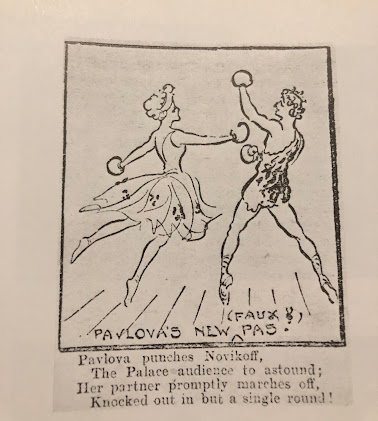Ballet Without Music

Photo Credit: Anna Pavlova with Hubert Stowitts in La Peri, Buenos Aires, 1919 from Anna Pavlova Her Life And Art by Keith Money Anna Pavlova was a visionary who thought outside the box. She was a risk-taker too, which usually brought excellent results for her and her company, but her unconventional thoughts or ideas didn't always match the views and opinions of some of her peers in her time. One idea she had she even thought some would find too strange or radical, but she wanted to try this experiment one day, and that was to have a ballet be done without music. She talked about this idea in an interview with the press mentioned here. "No doubt should I or somebody else decide upon presenting a ballet without the musical accompaniment the idea would be greeted with derision. But it would be an interesting experiment, making every man and woman his or her own composer, and if the dancers possessed the necessary talent it would be well worth while. I am planning to try the expe


